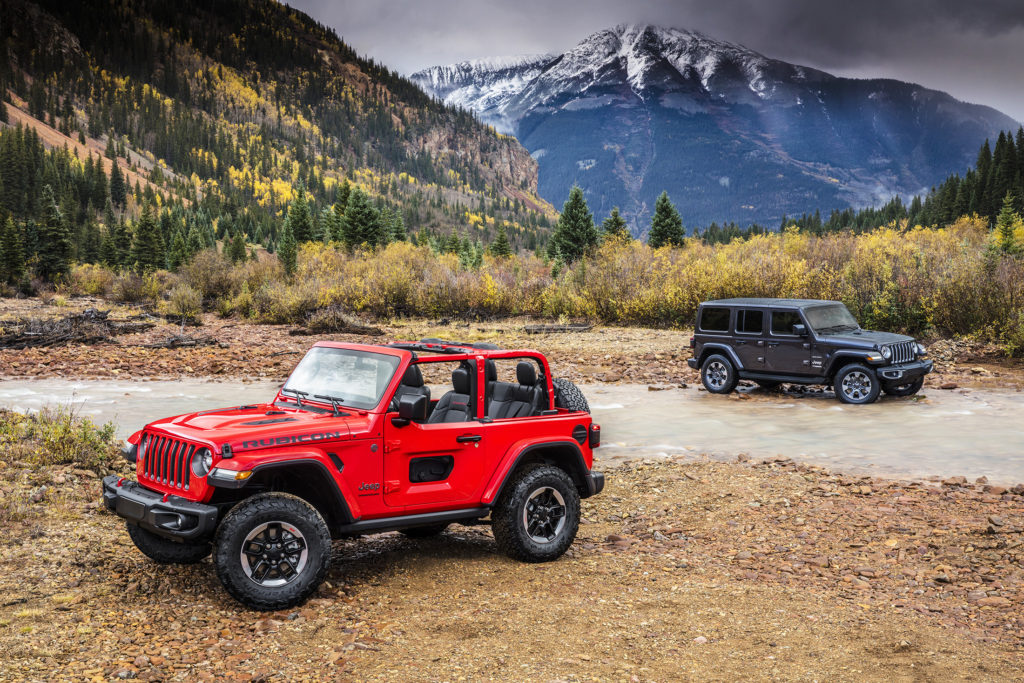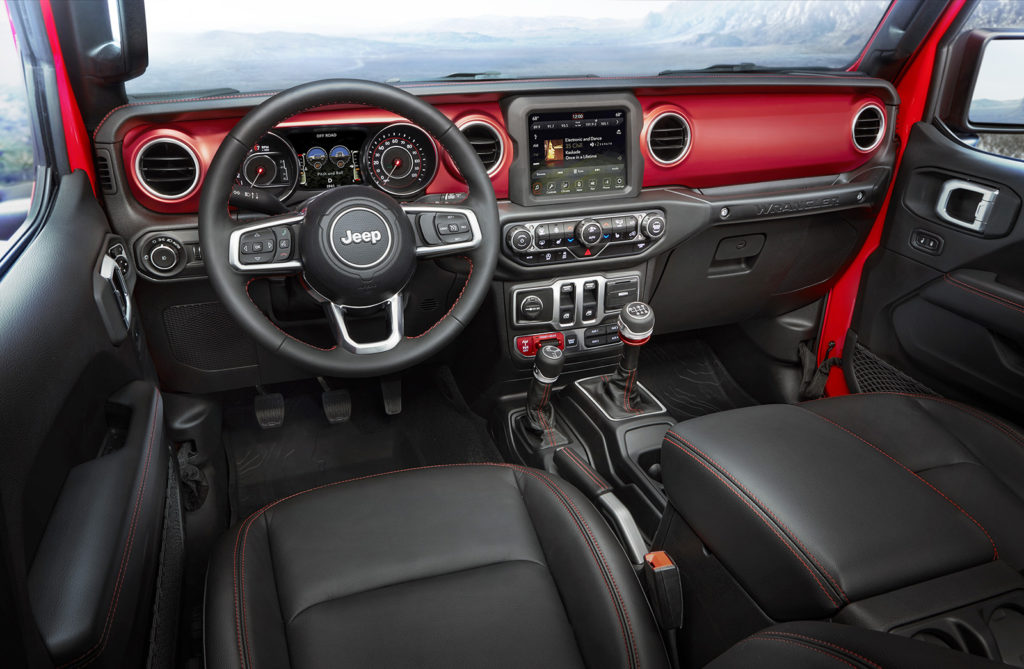Cargazing
By Derek Price
Driving through the dusty, rocky Sonoran Desert northwest of Tucson, I turned a corner and saw several of Jeep’s spotters perched on top of a mountain. They looked like specks.
“You want me to drive up that?” I thought, seeing what looked like a sheer, cactus-covered cliff in front of me.
With the help of those expert spotters, though — the same people who run the Jeep Jamboree that crosses the Rubicon Trail each year — I was able to plant the tires in just the right spots, at just the right angles, to deftly pick my way between the cacti and up the mountain.
By the time I made it to the top and saw the breathtaking view of the desert valley down below, it felt like I’d done the impossible. And it was all thanks to one vehicle that made it happen: the all-new Jeep Wrangler.
The fact that a Wrangler can do extreme off-roading isn’t surprising. This new design is built for the job just like the old one was, with incredible ground clearance, breakover and departure angles and a purpose-built 4×4 system that helps it climb over rocks like a mountain goat.
The surprise comes when you see just how much better it’s gotten on pavement, the place where a Wrangler has always felt out of its habitat.
At highway speeds, there’s a night-and-day difference. I think the new soft-top model is even quieter than the old hard-top Wrangler, which is hard to believe for a vehicle that’s basically an aerodynamic brick with a tarp on top. And the hard-top model feels almost as quiet as a modern car, a huge compliment for a vehicle that’s never been known for that.

The all-new Jeep Wrangler has a design that is instantly recognizable while being updated for a new era. It’s quieter and more refined than ever before, but it offers more extreme off-road capability at the same time.
Going into the drive, I was a bit skeptical that a new-generation Wrangler — designed with things like gas mileage and refinement in mind — could continue the mystique of a vehicle with roots that date to World War II. A softer, gentler, friendlier Jeep could dampen its appeal in my mind.
But no. This new one still feels like it could topple Hitler.
Its mountain-climbing tech is impressive to be sure. A new generation of Dana axles, electric front and rear axle lockers, 33-inch off-road tires, incredibly low crawl ratios and the ability to ford 30 inches of water let it travel where few other vehicles could dream of going.
Even better is the new Wrangler’s focus on its heritage, including things that make no logical sense whatsoever.
The front windshield, for example, still folds forward to let you feel the wind on your face when out on the trails. There’s no practical reason for it to do that. It doesn’t have to be tightly packed for shipping like the original Jeep. It doesn’t help it be any more capable.
The fold-down windshield is just for fun. And at its heart, that’s what the Wrangler has always been about.
You can still get an open-air experience in it, thank goodness, including doors that can be removed and a soft top that can be stowed away faster and easier than before.
The Wrangler also offers two hard tops and a brilliant, full-length canvas top that folds away at the touch of a button, called Sky One-Touch.

The new Wrangler’s cabin stays true to its heritage while also offering a more modern, feature-filled layout. It can still be stripped down for a completely open-air driving experience.
Two engines are available now, with a third option on its way soon.
For now, the Wrangler comes with either a 2.0-liter turbocharged four-cylinder engine or an updated version of the tried-and-true 3.6-liter Pentastar V6. Slipperier aerodynamics, an eight-speed automatic transmission, a magnesium swing gate in back, along with a hood, doors, fender flares and hinges made from aluminum, all help to improve its gas mileage ratings to 18 mpg in the city and 23 on the highway.
Next year, Jeep will be introducing a third engine option: a 3.0-liter diesel V6 to be added as a 2019 model.
The all-new two-door Wrangler starts at $26,995 and ranges up to $36,995 for the Rubicon package. The four-door Unlimited version starts at $30,495 for the base trim, $37,345 for the Sahara and $40,495 for the top-of-the-line Rubicon.
At A Glance
What was tested?
2018 Jeep Wrangler Rubicon ($36,995). Options: None. Price as tested (including $1,195 destination charge): $38,190
Wheelbase: 96.8 in.
Length: 166.8 in.
Width: 73.8 in.
Height: 73.6 in.
Engine: 3.6-liter V6 (285 hp, 260 lbs.-ft.)
Transmission: Eight-speed automatic
Fuel economy: 18 city, 23 highway
RATINGS
Style: 10
Performance: 10
Price: 6
Handling: 5
Ride: 6
Comfort: 7
Quality: 8
Overall: 9
Why buy it?
It’s quieter, more refined and more capable than ever before, while still carrying the mystique of the Jeep brand that dates to World War II.
